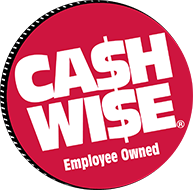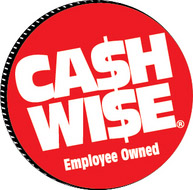

Amanda
Time to get fancy! Let’s talk fondant. Get out your rolling pin and nonstick mat and prepare those arm muscles for a little work out. I’ve included a little video to see the process but let’s also discuss the process from supplies to cake.
First thing you’ll need, a few special supplies. A cake, lightly iced. When you put the fondant on top it can get a bit too squishy and create a mess if your frosting is too thick. I’m going to be covering an 8” round, double layered, cake. I used 1 lb. of fondant to cover my cake but you could use a little more to give yourself a little wiggle room when covering. You should also have a fondant smoothing tool, a paddle like looking device, and a nonstick silpat mat for rolling on. Most important you need a rolling pin. I like a big heavy rolling pin for the job. You’ll also need to sprinkle powdered sugar, I like to use a shaker for this, but you could do it by hand too. I also like to use a pizza cutter for trimming my cake. It will roll smoothly around the cake. I don’t use a knife, those I keep far away from the silpat mat. Any knicks or cuts you leave behind when using a blade will show up forever after when you roll out fondant.
Ok, now to get rolling. If you want to color your fondant go ahead and do that first, then cover it up to keep it from getting crusty. Next I base ice my cake and then keep it close as I go back to start on the fondant again.
Knead your fondant, a lot. Keep kneading until it feels silky and smooth. Your hands should warm it up and make it pliable. The more you knead it the better your fondant covering experience will go. If your fondant feels dry and stiff, keep kneading. There should be a little stretch. Once it’s warmed up you can start rolling it out.
 Dust your mat with powdered sugar and place your flattened ball of fondant in the center of the mat. I usually squish it out a little into the shape I want, a circle or a square. Dust the top a little with powdered sugar then start rolling. Keep rolling and rolling. Work the fondant into the shape you want. Rotate your pin, rotate the fondant. If it gets too oval or rectangular don’t be afraid to stretch back into the shape you want with your hands. Covering your cake will be easier if you can keep your fondant in a shape relatively similar to your cake. Keep checking the thickness. Give a little more muscle to the parts that are thicker. It can be tempting to use a thick a slab of fondant on your cake in the excitement of covering your cake, but be patient. A thick slab isn’t going to taste good and can squish your cake down creating slouching and puckering after an hour or so. Go thin. Shoot for about ¼” or less for a typical cake, but a little on the thicker side of that for a shaped cake to allow for stretching.
Dust your mat with powdered sugar and place your flattened ball of fondant in the center of the mat. I usually squish it out a little into the shape I want, a circle or a square. Dust the top a little with powdered sugar then start rolling. Keep rolling and rolling. Work the fondant into the shape you want. Rotate your pin, rotate the fondant. If it gets too oval or rectangular don’t be afraid to stretch back into the shape you want with your hands. Covering your cake will be easier if you can keep your fondant in a shape relatively similar to your cake. Keep checking the thickness. Give a little more muscle to the parts that are thicker. It can be tempting to use a thick a slab of fondant on your cake in the excitement of covering your cake, but be patient. A thick slab isn’t going to taste good and can squish your cake down creating slouching and puckering after an hour or so. Go thin. Shoot for about ¼” or less for a typical cake, but a little on the thicker side of that for a shaped cake to allow for stretching.
Now that you are at your desired thickness and size you are ready to cover. How big should it be? The height of your cake x 2, plus the width of the top. Then add a couple inches to allow for fidgeting and fussing.
You want to do the next steps in one, uninterrupted step. Don’t answer the phone, don’t stop for a snack. The fondant is already drying and getting a skin and if you walk away it will wrinkle and tear when you try to do anything with it, then you get to start all over.
Move your iced cake over next to your fondant slab. There are many way and tricks to picking up fondant. I don’t use them. I just pick it up like a pizzeria guy. Do it quick, yet gentle, and keep the fondant moving and you shouldn’t get any tears. If you stand around thinking with it draped over your fingers, yes, it will get deformed, but why are you just standing there? Place your fondant over the cake. There should be a little moisture left in the frosting to make it stick. If you think you are going to take more than 15 minutes to roll out your fondant covering your cake wouldn’t be a bad idea.
Lay your fondant across the top, let the sides drape down. Use your hand to smooth out the fondant from the middle to the outside. Then use your smoothing tool to briskly rub the surface. Apply pressure, just enough to work out any air bubbles. Try to work from the middle to the outside to move out any bubbles. Work quickly; your sides are starting to firm up.
Now for the tricky part, the sides. You need to start smoothing the fondant to the frosting. Work in small areas, going in a circle around your cake. You  don’t need to stick it all at once. Imagine there are horizontal lines on your cake, about an 1 or so apart, just work from the top imaginary ring down to the next. By the time you get to the bottom half you’ll need to gently tug and stretch at the fondant to avoid the folds and pleats. Keep moving, keep working at it, and keep being patient. Smooth as you go to avoid air bubbles.
don’t need to stick it all at once. Imagine there are horizontal lines on your cake, about an 1 or so apart, just work from the top imaginary ring down to the next. By the time you get to the bottom half you’ll need to gently tug and stretch at the fondant to avoid the folds and pleats. Keep moving, keep working at it, and keep being patient. Smooth as you go to avoid air bubbles.
Once you have your cake covered you can trim the excess off from around the bottom with your pizza cutter. Now pick up your smoother again and start rubbing all over. At this point you are trying to polish the fondant up. Rub out any ripples, move any air bubbles down and out. If you have any stubborn bubbles you can poke a small hole with a thin pin and let the air out. This will leave a hole, but sometimes it’s worth the trade off on stubborn bubbles.
Congratulations! You did it! You have a smooth fondant cake. Have fun dressing it up from this point. You can paint it, stick fondant to it, and quilt it. And don’t forget the important part, you can eat it.
Amanda
Coborn’s Cake Decorator
Sartell, MN – Pine Cone Road
Click Here for more articles written by Amanda













